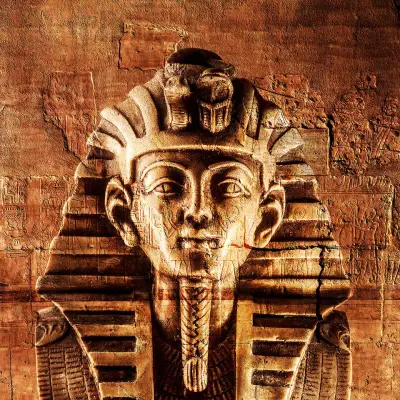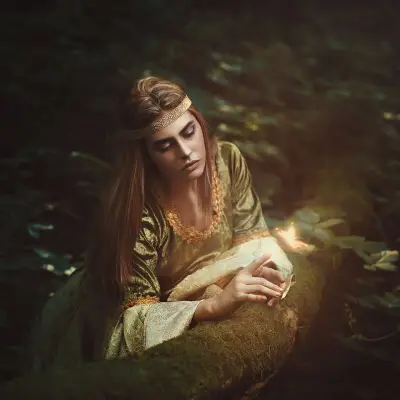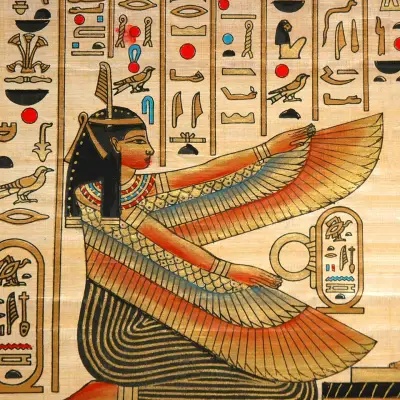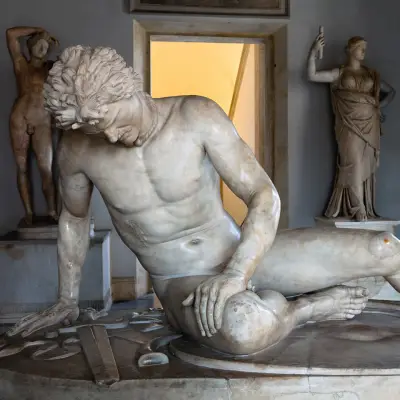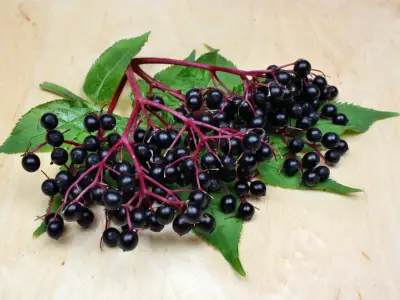The Cailleach is one of the oldest and most powerful figures in Celtic mythology, known as the goddess of winter and a shaper of the land. In this article, you’ll explore her myths, powers, symbols, and lasting influence, gaining a deeper understanding of how this ancient figure continues to inspire and intrigue today.
Jump to:
- Who Was The Cailleach in Celtic Mythology?
- The Cailleach’s Myths
- The Role of The Cailleach in Celtic Storytelling
- What Powers Did The Cailleach Possess?
- Symbols Associated with The Cailleach
- The Cailleach’s Lineage and Connections
- Why Is The Cailleach Special?
- The Cailleach in Modern Culture
- The Cailleach’s Worship and Legacy
- Frequently Asked Questions About The Cailleach
- Study Celtic Mythology for £29
Recommended for you!
Best SellersWho Was The Cailleach in Celtic Mythology?
The Cailleach, whose name comes from the Gaelic word meaning "old woman" or "hag," is one of the oldest and most powerful figures in Celtic mythology. She’s often known as the Celtic goddess of winter, ruling over the cold, dark months of the year.
The Cailleach's meaning goes beyond just 'old woman'; she represents the forces of nature, wisdom, transformation, and endurance. She isn't simply an old crone; she is the ancient power of the land itself; wild, untameable, and deeply wise.
The Cailleach’s Myths
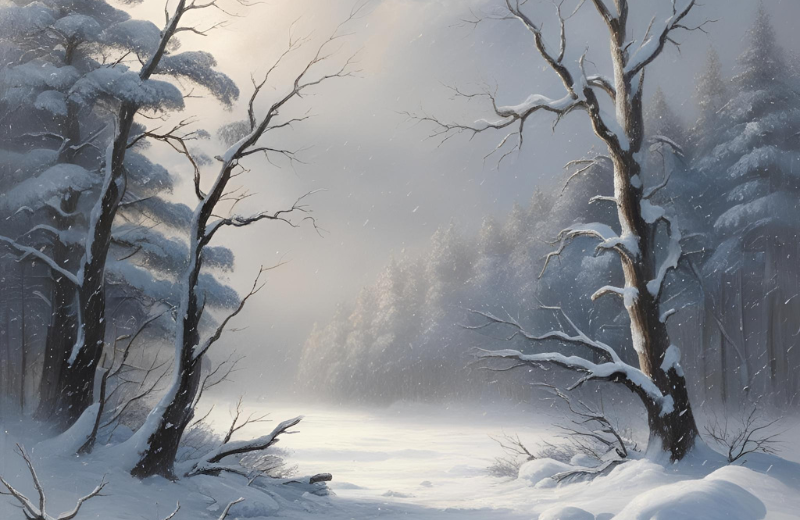
The myths of the Cailleach are varied, powerful, and rich with meaning. Through her stories, ancient peoples explored their relationship with nature, the seasons, and the cycles of life and death.
The Cailleach as Creator of the Land
In many tales, the Cailleach is depicted as a giantess or a fearsome woman who shaped the very landscape. It’s said she created mountains and valleys by dropping boulders from her apron or by hammering the earth with her mighty hands. These stories reveal how ancient peoples saw their surroundings as alive, sacred, and shaped by divine forces.
The Cailleach and the Turning of the Seasons
In Scottish mythology, the Cailleach appears each winter, bringing storms, snow, and fierce blizzards to the land. When spring arrives, she turns to stone, symbolising the end of winter and the awakening of new life. Some tales also describe her wielding a magical staff, which she uses to freeze the ground and hold the land in the grip of winter until it is time for the thaw.
The Cailleach and the Capture of Spring
Another myth speaks of the Cailleach capturing the youthful goddess of spring, representing the timeless battle between the cold grip of winter and the bright renewal of spring. This struggle reflects the hardship of surviving the harsh months and the joy and relief when warmth and growth return. Her myths are a vital part of Celtic storytelling, weaving deep layers of symbolism into the natural world.
The Role of The Cailleach in Celtic Storytelling
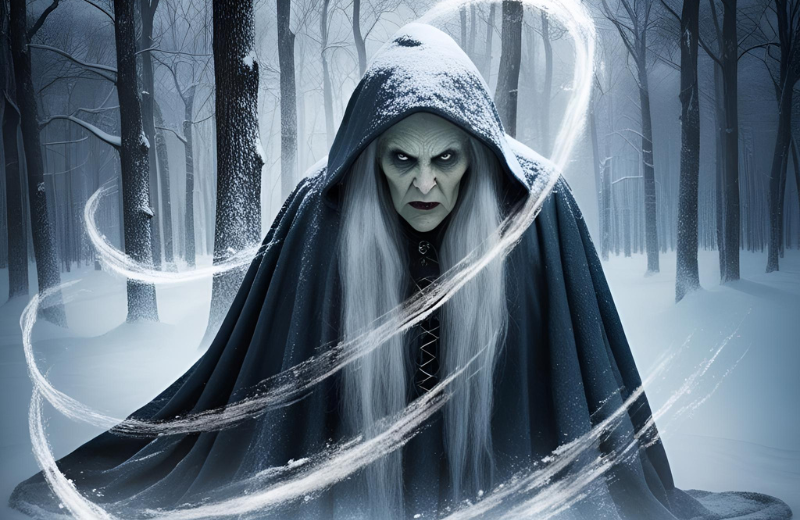
The Cailleach's role in Celtic stories is many-layered; she’s a teacher, a destroyer, a creator, and a protector. Through her, the Celts explained the natural cycles of death and rebirth, decay and renewal.
In Celtic traditions, the Cailleach is honoured as the winter goddess, embodying the darker half of the year. Through her stories, she teaches the importance of respecting the challenges of winter, highlighting the need for preparation, resilience, and an understanding of nature’s cycles.
In some Irish legends, she’s seen guarding sacred wells and rivers, further linking her to life, death, and the natural world.
What Powers Did The Cailleach Possess?
The Cailleach was no ordinary spirit. She held power over weather, time, and the very land itself. Her powers included:
- Weather control: She could summon fierce storms, hail, and snow to blanket the land.
- Shaping the landscape: Myths claim she formed hills, mountains, and rivers.
- Longevity: She was seen as a timeless figure, far older than any human.
- Transformation: Some legends suggest she could transform herself or others, especially around Samhain (Halloween).
Symbols Associated with The Cailleach
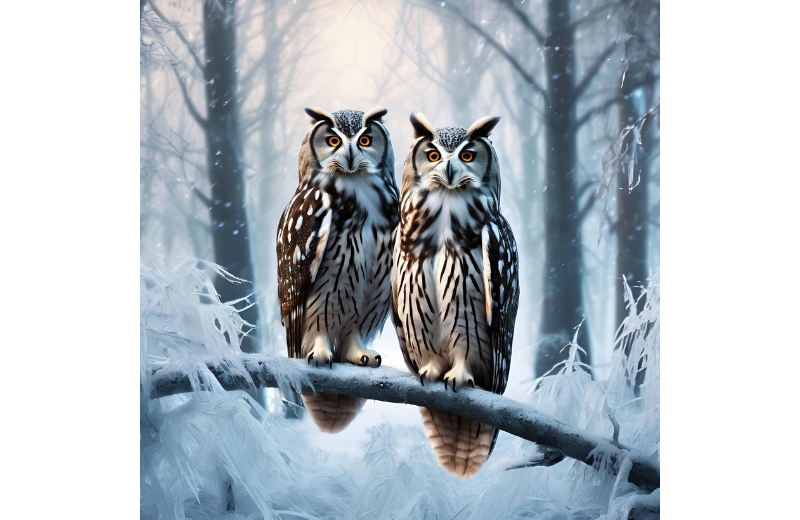
The cailleach symbols are rooted deeply in nature. Some of the most common include:
- The Staff: Used to freeze the ground and herald winter's arrival.
- Stone or Rock Formations: Said to be her resting place during the warmer months.
- The Owl: An animal associated with wisdom, solitude, and the night, often linked to her.
- Mountains and Caves: Seen as her dwelling places.
- The Deer: Sometimes associated with her ability to control the herds and the seasons.
The Cailleach’s Lineage and Connections
The Cailleach’s family connections shift across different Celtic traditions, adding to her mysterious nature. In some stories, she’s said to be married to a figure called the Bodach, a shadowy old man who complements her role as a symbol of winter's enduring power. While detailed accounts of their relationship are limited, the pairing suggests an ancient bond between the forces of age, wisdom, and the colder seasons.
Some myths also connect her to Brigid, the goddess of spring, as her opposite and sometimes her other half, showing the seamless link between winter and spring, death and renewal. Their relationship is a dance between seasons, a key to understanding how the Celts viewed the balance of nature.
Although the Cailleach is not always portrayed as part of the triple goddess (maiden, mother, and crone), she fits naturally into the 'crone' aspect. Her role focuses on wisdom, endings, and transformation, marking her as an essential figure in the greater cycle of life and nature.
Why Is The Cailleach Special?
The Cailleach is special because she represents nature's raw, untameable power. Unlike many deities associated with beauty, war, or love, she reminds us of survival, patience, and the deep wisdom that comes with age.
She also gives voice to the often-overlooked realities of the world — hardship, cold, death, and transformation — and shows that these are not to be feared, but understood and respected.
She holds a particularly meaningful place for anyone who finds strength in resilience and who understands that beauty often lies in the wild and the weathered.
The Cailleach in Modern Culture

Today, the Cailleach remains a powerful and respected figure within modern spirituality, especially among Pagan, Druidic, and Wiccan communities. She is often honoured as the goddess of winter, embodying endurance, wisdom, and the transformative forces of nature. Modern rituals dedicated to her frequently take place at Samhain and the Winter Solstice, focusing on embracing change, releasing the old, and preparing for new beginnings.
Beyond spiritual practices, the Cailleach has found her way into popular culture, literature, and the arts. She appears in contemporary novels such as The Cailleach: The Hag of Beara by Gearóid Ó Crualaoich, which explores her myths through a modern lens. In music, traditional Scottish and Irish folk songs sometimes reference the harshness of the Cailleach’s winters.
Visual artists often depict her as a towering crone figure amid snow-covered landscapes, capturing her timeless connection to the wildness of the earth. Even in modern television and fantasy media, characters inspired by the Cailleach's attributes — wise, powerful women tied to the seasons — continue to keep her image alive.
The Cailleach’s Worship and Legacy
If you're interested in honouring the Cailleach today, you might find meaning in spending time in wild, untamed natural places such as forests, mountains, and coastal cliffs; the rugged landscapes she is said to have shaped. Building an altar with stones, antlers, and symbols of winter, or simply lighting a candle on a stormy night while reflecting on change and resilience, can be simple but powerful acts of devotion.
Although specific ancient ceremonies dedicated to her have largely been lost over time, her spirit endures. Through storytelling, seasonal rituals, and the continued respect for the forces she represents, the Cailleach remains a living symbol of nature’s strength, the wisdom of age, and the beauty hidden within the harshest seasons.
Recommended for you!
Best SellersFrequently Asked Questions About The Cailleach
How do you pronounce the Cailleach?
It’s pronounced "KAL-yukh," with the "kh" like the Scottish "loch." The final sound is almost a soft, rasping breath.
What does Cailleach mean in English?
The definition of "Cailleach" in English is "old woman" or "hag," but it carries deep cultural and spiritual significance beyond its simple translation.
Who is the Greek equivalent of Cailleach?
Some suggest Hecate, the Greek goddess of magic, crossroads, and ghosts, shares qualities with the Cailleach, but they are not exact parallels. Both figures represent wisdom, change, and the mysteries of life and death, but Hecate is more associated with magic and the supernatural, while the Cailleach is firmly tied to the natural world and seasonal cycles.
Is the Cailleach Irish or Scottish?
She appears in both Irish and Scottish mythology, with strong traditions in both cultures. In Scotland, she is often known as Beira, Queen of Winter, while in Ireland, her tales intertwine with other important figures like Brigid.
Where does the Cailleach live?
She is said to live in wild, rugged places — caves, mountain tops, and stone circles — sleeping during summer and waking with the winter. Locations like Ben Nevis in Scotland and Slieve na Calliagh in Ireland are linked to her legends, where ancient rocks and landscapes are seen as her handiwork. Her chosen homes reflect her deep connection to the raw and powerful forces of the earth.
What is the relationship between Cailleach and Brigid?
Brigid and the Cailleach represent opposing forces, youth and age, spring and winter, forming a perfect balance in Celtic mythology. While Brigid brings light, growth, and new beginnings, the Cailleach rules over the darker half of the year, ensuring the cycle of death and rebirth continues. Their relationship symbolises the turning of the seasons and the eternal dance between creation and decay.
What animals are associated with Cailleach?
Deer, wolves, and owls are commonly associated with her, all creatures of the wild and winter. Deer are often seen as her herd, symbolising her guardianship over nature, while wolves reflect her fierce and untamed spirit. Owls, creatures of the night and wisdom, mirror her deep, ancient knowledge of the natural world.
What are the colours of Cailleach?
Blues, greys, and whites —the colours of winter skies and snow —are often linked to her. These colours evoke the chill and stark beauty of the season she rules, as well as her ancient, ageless presence. They also reflect the quiet, contemplative side of winter, where the world sleeps under a blanket of frost.
What is another name for Cailleach?
Beira, Queen of Winter, is another name by which Cailleach is known. In Scottish traditions, she is particularly associated with this title, symbolising her rule over the cold months. The name Beira highlights her majestic and powerful nature as a force of the natural world rather than a purely human figure.
Is the Cailleach the Morrigan?
The Cailleach and the Morrigan are different figures. The Morrigan is often associated with war, fate, and sovereignty, appearing in myths as a goddess who influences the outcomes of battles. The Cailleach, by contrast, is linked to the natural world, the winter season, and the formation of the land, embodying endurance and transformation through the harsher parts of the year.
Study Celtic Mythology for £29
If learning about figures like the Cailleach has sparked your curiosity, why not learn more about ancient Celtic legends? With Centre of Excellence’s Celtic Mythology Diploma Course, you can explore the fascinating myths, gods, and symbols that shaped ancient Celtic culture.
Whether you're passionate about history, spirituality, or storytelling, this course is engaging for everyone—no prior experience needed. Plus, by following the link below, you can enrol today for the discounted price of just £29.

